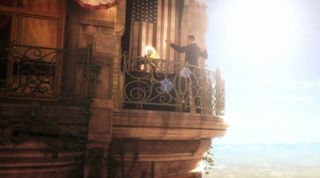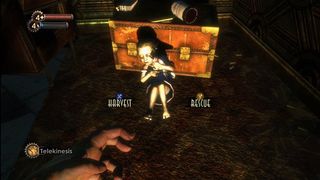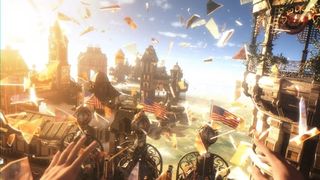BioShock Infinite – what we want to see
9 things that would make us look forward to 2012 even more
By the time we explored it in BioShock and BioShock 2, Rapture was effectively a post-apocalyptic society. Order had broken down, and the citizens had mutated into savage freaks interested mainly in killing outsiders. What we’ve seen of Columbia so far implies another utopia gone mad, but not in such an advanced stage of madness. The place is starting to crumble into disrepair, but the engines are still running, the flags are still waving and the inhabitants still (mostly) look human.

At the risk of the game becoming another Deus Ex (which wouldn’t be so bad), we’d like to see what a doomed utopia looks like before it’s gone completely crazy, when at least some of the inhabitants are still relatively sane people trying to live a normal existence. What we’ve seen of the demo so far seems to promise as much, but whether the people are just window dressing, mind-controlled threats, possible allies or just collateral damage waiting to happen remains to be seen.
In any case, being a clandestine agent in what’s essentially enemy territory populated with paranoid civilians could lead to some interesting…
No matter how the first BioShocks tried to spin it, the decision of whether to kill or not to kill is an easy one. Either you make the “good” choice not to murder helpless individuals, whether they’re genetically corrupted little girls or cowering enemies, or you make the “bad” one and blast away. Follow the dark side for more power early on, or the light side for roughly the same amount of power (and a smug sense of self-righteousness) later. It’s old hat.

Above: Seriously, what kind of monster do you have to be for this to be a difficult decision?
Now that the series is about to enter its third installment, it might be time to introduce a less obvious version of morality. Fine, we get it: you don’t want to kill the little girls. But what if letting them live meant they’d be used against you later? Or that a section of the game would be closed off to you completely? For that matter, what if you had to make a choice between potentially game-altering options that weren’t obviously good or bad, like forming a temporary alliance with one faction of crazies over another?
Alpha Protocol has already pulled this off successfully, and Alpha Protocol kind of sucked. Surely BioShock can do it better.
Sign up to the GamesRadar+ Newsletter
Weekly digests, tales from the communities you love, and more
When we delved through Rapture, we did so under the assumption that it was the first of its kind, a secret city with advanced technology completely unknown to the world at large. And while the only thing we ever really saw of that “world at large” was the inside of a passenger plane, we always assumed BioShock was set in our own world, more or less. A world that hadn’t already seen a massive, famous steampunk city/war platform floating through its clouds.

Above: Seeing Rapture 50 years after this was around would be kind of a letdown, don’t you think?
Add Columbia to BioShock’s existing timeline, however, and Rapture suddenly becomes less special. Less interesting. If there had already been a dystopian city filled with crazies and set in an impossible environment, then Andrew Ryan’s undersea metropolis becomes less of a monolithic achievement and more business as usual. And surely, the city and its technologies – particularly Plasmids – would have been regarded as a less significant discovery by the interlopers who found their way there.
Don’t get us wrong – we love Rapture, and we’re not so curmudgeonly that we wouldn’t like to see a third game set there. We just don’t want to see it diminished by an earlier, more impressive achievement in the same timeline. And we sure as hell don’t need to see a final shot of a little boy named Andrew staring wistfully into the sunset and muttering, “Someday… someday, I’ll do it right.”
And then he putts a golf ball into a hole. And grows a mustache.

Above: We also don’t need to see a version of this with a young Ryan and Fontaine
No. We get that the BioShock name will move more units, but let’s not lessen Rapture’s importance by shoehorning it into a version of the 20th century already familiar with seemingly impossible sci-fi technologies.
Aug 17, 2010


Our first look at Ken Levine's newest creation

Did you catch all of this?

9 ways to make the best superhero game of all time even better
Most Popular


